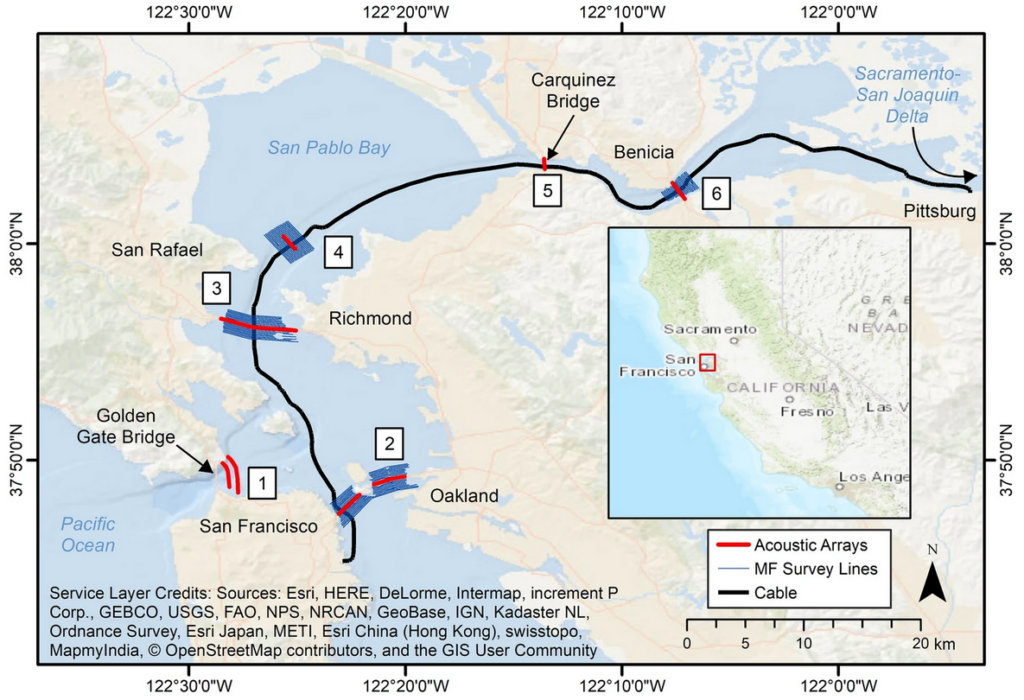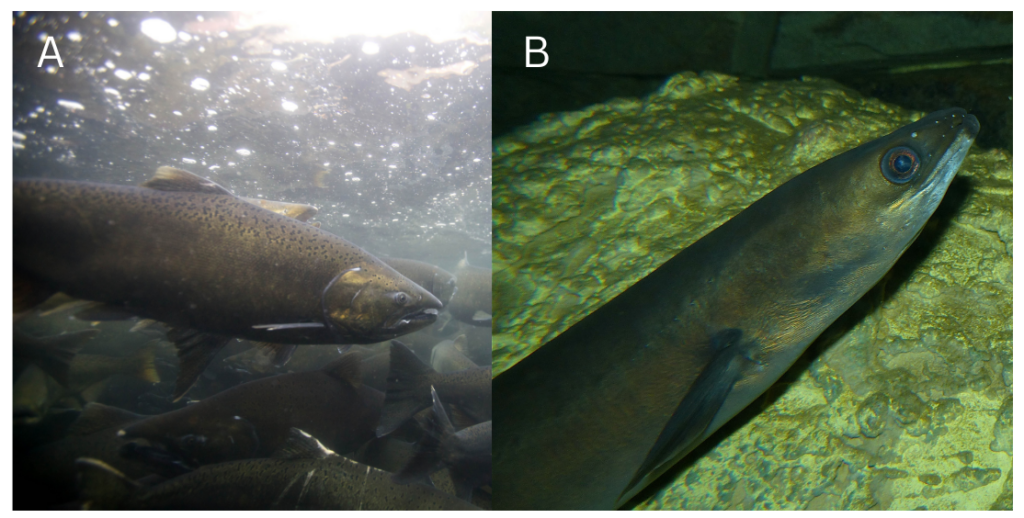[ad_1]
Wyman, M.T., Kavet, R., Battleson, R.D. et al. Assessment of potential impact of magnetic fields from a subsea high-voltage DC power cable on migrating green sturgeon, Acipenser medirostris. Mar Biol 170, 164 (2023). https://doi.org/10.1007/s00227-023-04302-4
Electromagnetism
Submerged power cables are increasing rapidly as we continue to try to meet the globe’s power needs. However, there is concern that electromagnetic fields (EMFs) produced by these cables negatively impact EMF-sensitive species.
Electromagnetic fields are a natural and artificial phenomenon created by the movement of an electric charge. As the name implies, it is made up of electric and magnetic fields. Earth has a natural magnetic field that is used by many migrating species to orient themselves to reach their destination. Power cables emit similar fields that can distort Earth’s field on a local scale. Shielding on the power cables can reduce some of this effect but is unable to prevent magnetic fields from permeating the water column.
Green Sturgeon Migration
The green sturgeon (Acipenser medirostris) is a EMF-sensitive species that is native to the Pacific coast. Individuals migrate upstream to their birth place every 2-4 years to reproduce. As an endangered species, with only a few thousand mature adults left, successful migrations are important to maintain the population.

The green sturgeon southern sub-population uses San Francisco Bay to reach the upper Sacramento River where they cross the Trans Bay Cable. The Trans Bay Cable in San Francisco Bay is a high-voltage subsea cable installed in 2010 that provides up to 40% of the city’s power needs. It runs parallel to the lower half of the green sturgeon migration route, presenting concerns on its effects on the animals’ ability to navigate the area.
Tracking
Using transmitters on tagged green sturgeon, individuals were tracked along the southern half of their migration path through the bay. Depending on cable status (on/off), the paths were then compared to identify:
- Migration success
- Misdirection
- Transit time through the bay
Models were then made to identify which environmental variables best predicted migration behavior. Variables included cable status, temperature, channel depth, tidal strength/direction, and water discharge from the bay.

Migration Influence
Overall, the status of the Trans Bay Cable did not significantly impact green sturgeon migrations. However, subtle effects were detected that may indicate a more complex relationship is present. This was demonstrated with the cable status being included in almost all environmental models as a nonsignificant variable. In other words, the combination of variables described earlier (cable status, temperature, channel depth…), best explained how green sturgeon were moving through the area.
Temperature was the only variable that was significant during the study. Cold water was found to significantly influence the success of inbound migrations. This may be a signal for the green sturgeon to begin their migration because adults typically enter San Francisco Bay in late winter.
Cable Curiosity
Prior studies on other electromagnetic-sensitive species have found mixed results. Chinook salmon (Oncorhynchus tshawytscha) use the same area and were found to have altered swimming behaviors around the Trans Bay Cable. However, it did not affect their migration success. Similar results were found with European eels (Anguilla anguilla). Swim speeds were significantly slower while crossing a subsea cable, but did not prevent them from continuing their migration.

Other slow swim speeds near subsea cables have been reported in little skates (Leucoraja erinacea) and lake sturgeon (Acipenser fulvescens). This exploratory behavior could indicate the influence these cables have on nearby fish; acting almost as a distraction or curiosity before the animal moves on. Simple cable installations do not seem to prevent normal behaviors like migration, but more complex installations with intersecting cables may create confusing environments for EMF-sensitive species.
Future Studies
Cable status does not significantly impact green sturgeon migration. However, prior studies on other EMF-sensitive species indicate more nuanced interactions can occur near subsea power cables. Slow swim speeds are linked with exploratory behavior, disrupting the journey to their final destination.
Due to the nature of this study, the swim speeds and proximity of the green sturgeon to the cable were unable to be measured. Future studies could look to further understand this interaction to better determine the degree at which subsea power cables influence green sturgeon. More complex subsea cable experiments could be investigated as well to understand the impact multiple cables may have before they are installed in the environment. This information will help inform future conservation efforts to protect migration routes of green sturgeon and other EMF-sensitive species.
I am a recent MSc graduate in marine biology from Bangor University, where I studied population dynamics of elasmobranchs off the coast of Wales. My interests lie in ecological data analysis to understand environmental processes and identify natural patterns. However, nothing beats being in the field and interacting directly with the marine life.
[ad_2]
Source link

